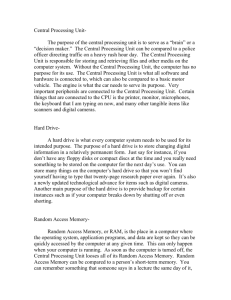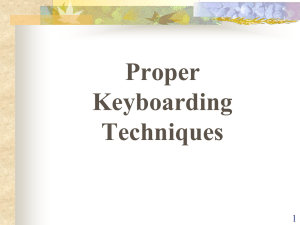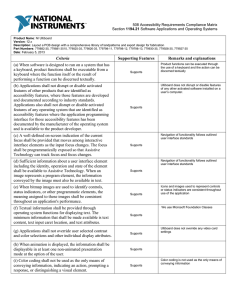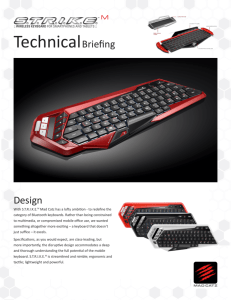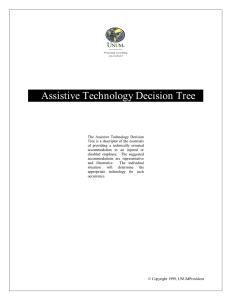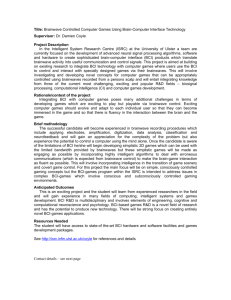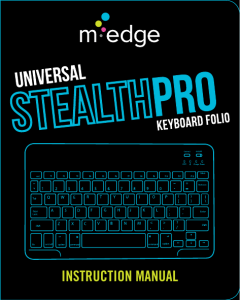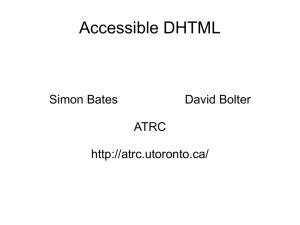Developing and Prototyping a Brain-Computer
advertisement
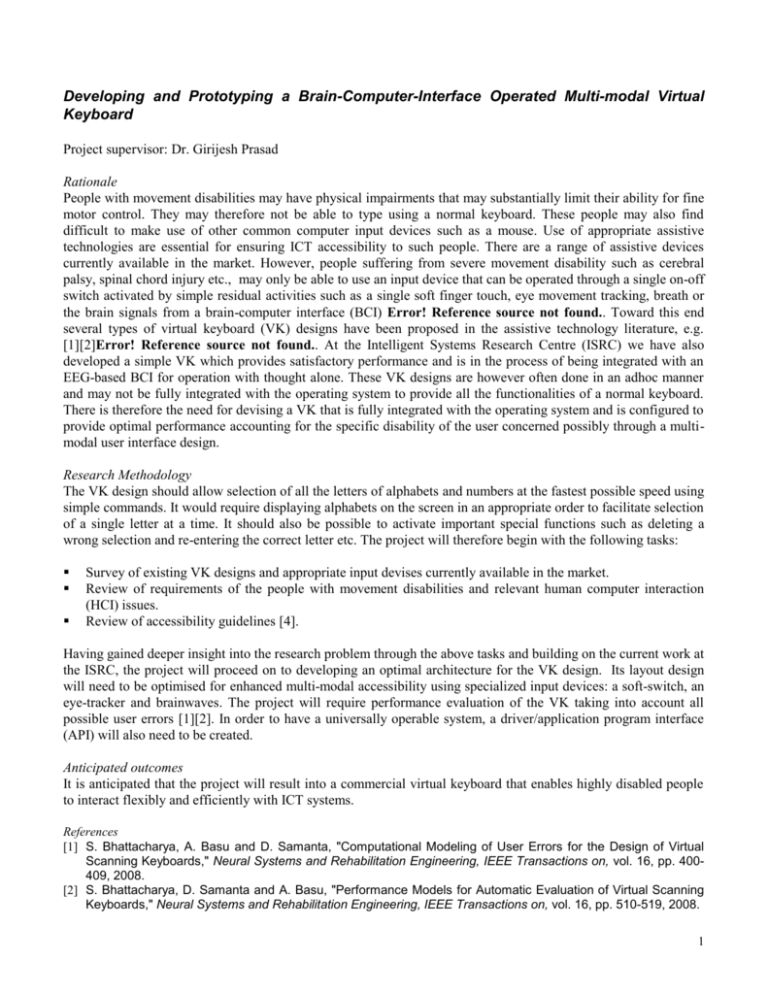
Developing and Prototyping a Brain-Computer-Interface Operated Multi-modal Virtual Keyboard Project supervisor: Dr. Girijesh Prasad Rationale People with movement disabilities may have physical impairments that may substantially limit their ability for fine motor control. They may therefore not be able to type using a normal keyboard. These people may also find difficult to make use of other common computer input devices such as a mouse. Use of appropriate assistive technologies are essential for ensuring ICT accessibility to such people. There are a range of assistive devices currently available in the market. However, people suffering from severe movement disability such as cerebral palsy, spinal chord injury etc., may only be able to use an input device that can be operated through a single on-off switch activated by simple residual activities such as a single soft finger touch, eye movement tracking, breath or the brain signals from a brain-computer interface (BCI) Error! Reference source not found.. Toward this end several types of virtual keyboard (VK) designs have been proposed in the assistive technology literature, e.g. [1][2]Error! Reference source not found.. At the Intelligent Systems Research Centre (ISRC) we have also developed a simple VK which provides satisfactory performance and is in the process of being integrated with an EEG-based BCI for operation with thought alone. These VK designs are however often done in an adhoc manner and may not be fully integrated with the operating system to provide all the functionalities of a normal keyboard. There is therefore the need for devising a VK that is fully integrated with the operating system and is configured to provide optimal performance accounting for the specific disability of the user concerned possibly through a multimodal user interface design. Research Methodology The VK design should allow selection of all the letters of alphabets and numbers at the fastest possible speed using simple commands. It would require displaying alphabets on the screen in an appropriate order to facilitate selection of a single letter at a time. It should also be possible to activate important special functions such as deleting a wrong selection and re-entering the correct letter etc. The project will therefore begin with the following tasks: Survey of existing VK designs and appropriate input devises currently available in the market. Review of requirements of the people with movement disabilities and relevant human computer interaction (HCI) issues. Review of accessibility guidelines [4]. Having gained deeper insight into the research problem through the above tasks and building on the current work at the ISRC, the project will proceed on to developing an optimal architecture for the VK design. Its layout design will need to be optimised for enhanced multi-modal accessibility using specialized input devices: a soft-switch, an eye-tracker and brainwaves. The project will require performance evaluation of the VK taking into account all possible user errors [1][2]. In order to have a universally operable system, a driver/application program interface (API) will also need to be created. Anticipated outcomes It is anticipated that the project will result into a commercial virtual keyboard that enables highly disabled people to interact flexibly and efficiently with ICT systems. References [1] S. Bhattacharya, A. Basu and D. Samanta, "Computational Modeling of User Errors for the Design of Virtual Scanning Keyboards," Neural Systems and Rehabilitation Engineering, IEEE Transactions on, vol. 16, pp. 400409, 2008. [2] S. Bhattacharya, D. Samanta and A. Basu, "Performance Models for Automatic Evaluation of Virtual Scanning Keyboards," Neural Systems and Rehabilitation Engineering, IEEE Transactions on, vol. 16, pp. 510-519, 2008. 1 [3] Scherer, R, Muller, GR, Neuper C, Graimann, B., Pfurtscheller, G., “An Asynchronously controlled EEG-based virtual keyboard: Improvement of the spelling rate”, IEEE Trans. on Neural Systems and Rehabilitation Engineering, 2004, Vol. 12, No.6, pp 979-984. [4] Web Accessible Initiative (WAI): http://www.w3.org/TR/WAI-WEBCONTENT. 2


